FOSL2 promotes VEGF-independent angiogenesis by transcriptionnally activating Wnt5a in breast cancer-associated fibroblasts
- PMID: 33754039
- PMCID: PMC7978317
- DOI: 10.7150/thno.55074
FOSL2 promotes VEGF-independent angiogenesis by transcriptionnally activating Wnt5a in breast cancer-associated fibroblasts
Erratum in
-
Erratum: FOSL2 promotes VEGF-independent angiogenesis by transcriptionnally activating Wnt5a in breast cancer-associated fibroblasts: Erratum.Theranostics. 2022 Aug 18;12(14):6157-6158. doi: 10.7150/thno.77019. eCollection 2022. Theranostics. 2022. PMID: 36168614 Free PMC article.
Abstract
Cancer-associated fibroblasts (CAFs), a predominant component of the tumor microenvironment, contribute to aggressive angiogenesis progression. In clinical practice, traditional anti-angiogenic therapy, mainly anti-VEGF, provides extremely limited beneficial effects to breast cancer. Here, we reveal that FOS-like 2 (FOSL2), a transcription factor in breast CAFs, plays a critical role in VEGF-independent angiogenesis in stromal fibroblasts. Methods: FOSL2 and Wnt5a expression was assessed by qRT-PCR, western blotting and immunohistochemistry in primary and immortalized CAFs and clinical samples. FOSL2- or Wnt5a-silenced CAFs and FOSL2-overexpressing NFs were established to explore their proangiogenic effects. Invasion, tubule formation, three-dimensional sprouting assays, and orthotopic xenografts were conducted as angiogenesis experiments. FZD5/NF-κB/ERK signaling activation was evaluated by western blotting after blocking VEGF/VEGFR with an anti-VEGF antibody and axitinib. Dual luciferase reporter assays and chromatin immunoprecipitation were performed to test the role of FOSL2 in regulating Wnt5a expression, and Wnt5a in the serum of the patients was measured to assess its clinical diagnostic value for breast cancer patients. Results: Enhanced FOSL2 in breast CAFs was significantly associated with angiogenesis and clinical progression in patients. The supernatant from CAFs highly expressing FOSL2 strongly promoted tube formation and sprouting of human umbilical vein endothelial cells (HUVECs) in a VEGF-independent manner and angiogenesis as well as tumor growth in vivo. Mechanistically, the enhanced FOSL2 in CAFs was regulated by estrogen/cAMP/PKA signaling. Wnt5a, a direct target of FOSL2, specifically activated FZD5/NF-κB/ERK signaling in HUVECs to promote VEGF-independent angiogenesis. In addition, a high level of Wnt5a was commonly detected in the serum of breast cancer patients and closely correlated with microvessel density in breast tumor tissues, suggesting a promising clinical value of Wnt5a for breast cancer diagnostics. Conclusion: FOSL2/Wnt5a signaling plays an essential role in breast cancer angiogenesis in a VEGF-independent manner, and targeting the FOSL2/Wnt5a signaling axis in CAFs may offer a potential option for antiangiogenesis therapy.
Keywords: FOSL2; VEGF-independent angiogenesis; Wnt5a; cancer-associated fibroblasts.
© The author(s).
Conflict of interest statement
Competing Interests: The authors have declared that no competing interest exists.
Figures

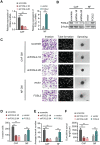


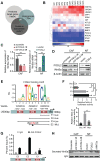
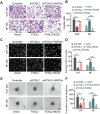
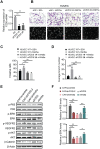
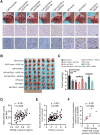
Similar articles
-
MiR-205/YAP1 in Activated Fibroblasts of Breast Tumor Promotes VEGF-independent Angiogenesis through STAT3 Signaling.Theranostics. 2017 Sep 15;7(16):3972-3988. doi: 10.7150/thno.18990. eCollection 2017. Theranostics. 2017. PMID: 29109792 Free PMC article.
-
Cancer-associated fibroblasts facilitate premetastatic niche formation through lncRNA SNHG5-mediated angiogenesis and vascular permeability in breast cancer.Theranostics. 2022 Oct 17;12(17):7351-7370. doi: 10.7150/thno.74753. eCollection 2022. Theranostics. 2022. PMID: 36438499 Free PMC article.
-
HIF-1α/GPER signaling mediates the expression of VEGF induced by hypoxia in breast cancer associated fibroblasts (CAFs).Breast Cancer Res. 2013;15(4):R64. doi: 10.1186/bcr3458. Breast Cancer Res. 2013. PMID: 23947803 Free PMC article.
-
CAF-mediated tumor vascularization: From mechanistic insights to targeted therapies.Cell Signal. 2025 Aug;132:111827. doi: 10.1016/j.cellsig.2025.111827. Epub 2025 Apr 25. Cell Signal. 2025. PMID: 40288665 Review.
-
From darkness to light: Targeting CAFs as a new potential strategy for cancer treatment.Int Immunopharmacol. 2024 Dec 25;143(Pt 2):113482. doi: 10.1016/j.intimp.2024.113482. Epub 2024 Oct 29. Int Immunopharmacol. 2024. PMID: 39476569 Review.
Cited by
-
Bioinformatics evaluation of a novel angiogenesis related genes-based signature for predicting prognosis and therapeutic efficacy in patients with gastric cancer.Am J Transl Res. 2022 Jul 15;14(7):4532-4548. eCollection 2022. Am J Transl Res. 2022. PMID: 35958480 Free PMC article.
-
Molecular Insights on Signaling Cascades in Breast Cancer: A Comprehensive Review.Cancers (Basel). 2025 Jan 13;17(2):234. doi: 10.3390/cancers17020234. Cancers (Basel). 2025. PMID: 39858015 Free PMC article. Review.
-
Cellular interactions in tumor microenvironment during breast cancer progression: new frontiers and implications for novel therapeutics.Front Immunol. 2024 Mar 12;15:1302587. doi: 10.3389/fimmu.2024.1302587. eCollection 2024. Front Immunol. 2024. PMID: 38533507 Free PMC article. Review.
-
Human Umbilical Cord-Mesenchymal Stem Cells Combined With Low Dosage Nintedanib Rather Than Using Alone Mitigates Pulmonary Fibrosis in Mice.Stem Cells Int. 2025 Jan 7;2025:9445735. doi: 10.1155/sci/9445735. eCollection 2025. Stem Cells Int. 2025. PMID: 39817116 Free PMC article.
-
Biological effects and mechanisms of fisetin in cancer: a promising anti-cancer agent.Eur J Med Res. 2023 Aug 25;28(1):297. doi: 10.1186/s40001-023-01271-8. Eur J Med Res. 2023. PMID: 37626424 Free PMC article. Review.
References
-
- Folkman J. Tumor angiogenesis: therapeutic implications. N Engl J Med. 1971;285:1182–6. - PubMed
Publication types
MeSH terms
Substances
LinkOut - more resources
Full Text Sources
Other Literature Sources
Medical
Miscellaneous

